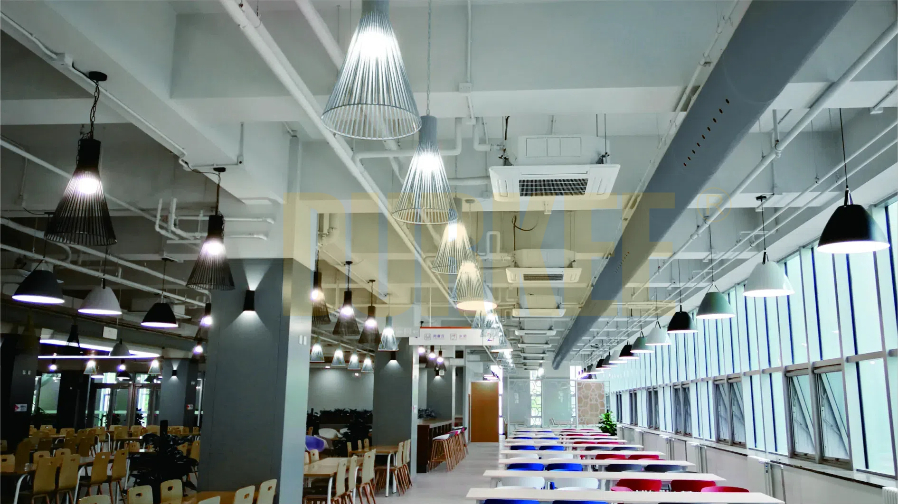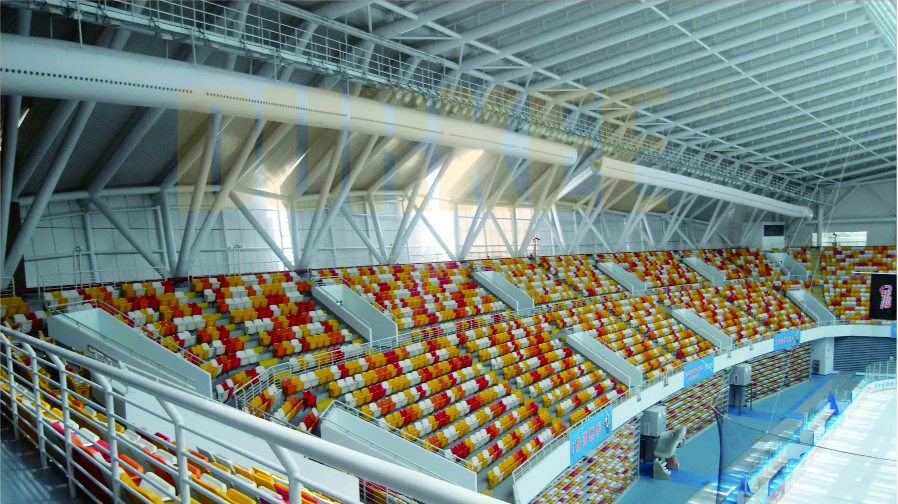 How Durkee Smart HVAC Innovations Take Center Stage at China Refrigeration 2025
How Durkee Smart HVAC Innovations Take Center Stage at China Refrigeration 2025
 Advantages and Prospects of Cloth Air Ducts
Advantages and Prospects of Cloth Air Ducts
 Fabric Duct: Innovator of Flexible Ventilation Systems
Fabric Duct: Innovator of Flexible Ventilation Systems
The education sector is at the forefront of innovation. It aims to create the best learning environments. This will help improve student performance and well-being. Central to this mission are HVAC systems, which maintain the comfort and air quality essential for a conducive learning atmosphere.
Among the advancements in this field, fabric ductwork has emerged as a versatile and efficient solution for schools. This article explores the unique challenges faced by educational institutions and how fabric ducting addresses these issues, offering a comprehensive and cost-effective approach to indoor climate management.
Schools are a tapestry of diverse environments, each with specific airflow requirements. Flexible Ducting systems meet these varied needs, offering tailored solutions that align with the distinct characteristics of different school spaces.
Whether it's the calm of a classroom, the dynamic energy of a gymnasium, or the sound isolation needed in a music room, fabric ductwork provides the right balance of airflow and silence.
In food preparation areas like school kitchens, fabric ducts ensure hygiene by preventing dust accumulation and promoting easy cleaning. This adaptability positions flexible ducting as a 'one-stop' solution for air dispersion, enhancing the educational experience across all school applications.
Indoor air quality is crucial for student health, and flexible ducting systems are designed to enhance air circulation, significantly reducing the risk of mold, mildew, and dust accumulation.
The porous nature of fabric ducts prevents condensation and contributes to a cleaner and healthier indoor environment. Compared to metal ducts, fabric ducts can be thoroughly cleaned, ensuring long-term hygiene that is unmatched by traditional systems.
Energy consumption is a significant concern for schools, and HVAC systems are often the largest contributors to energy use. flexible ducting systems are engineered to optimize airflow, reduce energy waste, and lower operational costs. The flexibility of fabric ducts allows for precise air distribution, ensuring that each space receives the ideal amount of conditioned air, thereby enhancing overall energy efficiency.
Budget constraints are a reality for many educational institutions. Fabric ducting offers a cost-effective alternative to traditional metal ducting, with lower material and installation costs. The ease of installation and fewer components required for fabric ducts translates into significant savings. Additionally, the long-term maintenance costs are reduced due to the durability and ease of cleaning fabric materials.
The volatility of the metal ducting market and supply chain disruptions have made it challenging for schools to plan and execute HVAC projects. Flexible ductwork, with its stable supply chain and consistent pricing, provides a reliable option for schools looking to upgrade or install new HVAC systems without facing unpredictable costs or delays.
Time is of the essence in school construction and retrofit projects, as delays can disrupt the academic calendar and inconvenience students and staff. Flexible ducting systems offer a quicker installation process compared to metal ducts, allowing for projects to be completed within tight timelines. This not only ensures minimal disruption to the school's operations but also facilitates timely project completion.
Several schools have adopted fabric ducting systems, reporting significant improvements in air quality, energy efficiency, and overall comfort. These testimonials highlight the tangible benefits of flexible ducting and serve as a testament to its effectiveness.


The adoption of flexible ducts in schools is more than just a trend; it represents a strategic investment in the health, comfort, and academic success of students.
By addressing the unique challenges of educational environments, flexible air ducting systems offer a versatile, hygienic, energy-efficient, and cost-effective solution that is well-suited to the dynamic needs of schools.
As the educational sector continues to prioritize the creation of optimal learning spaces, fabric ducting stands out as a leading choice for enhancing indoor climate management.
For further reading on the benefits of fabric ducting and HVAC duct systems in educational settings, please refer to the following resources: